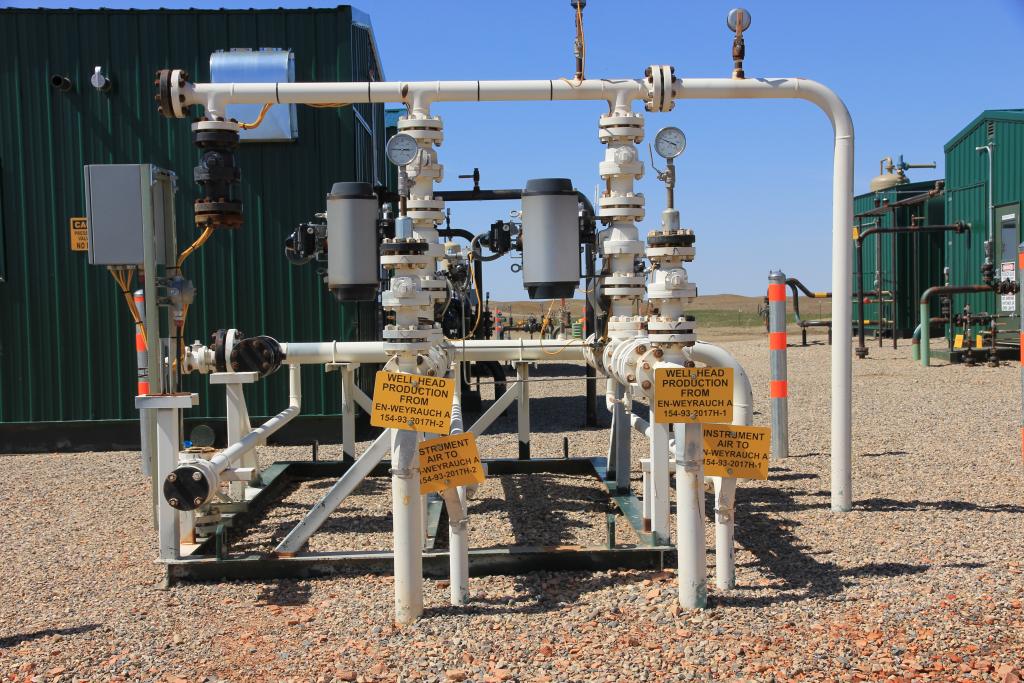
Oil and gas measurement is vital for the industry to ensure accurate sales and compliance with regulations. Measurements are taken before oil and gas leave the production site.
Measuring Oil
Crude oil refers to unrefined oil extracted directly from an oil well. This raw mixture contains hydrocarbon fluids, water, and various impurities, which is why it’s termed “crude.” In its unprocessed state, crude oil is primarily traded as a commodity.
Crude oil is measured using three primary units:
Barrels (BBL)
- A barrel holds 42 gallons.
- This unit is commonly used on royalty statements.
SI Units
- In countries using the metric system, oil volumes are measured in metric tonnes (mt).
Metric Tonnes
- Widely used in the former Soviet Union and Europe.
- One metric ton = 2,204 pounds
Each measurement method provides a standardized way to quantify crude oil, facilitating international trade and accurate reporting. When measuring crude oil volumes between 1 and 100 barrels of oil per day (BOPD), the stock tank’s volume is recorded before and after emptying the tank using a weighted measuring strap. For larger volumes, ranging from 100 to 1000 BOPD, measurements are taken automatically using a Lease Automatic Custody Transfer (LACT) system.
Factors Impacting Crude Oil Measurement
Several factors can influence the quality and quantity of crude oil, including temperature, API gravity, and the presence of water and sediment.
Temperature
Oil stored in a stock tank typically matches the surrounding air temperature. However, temperature variations can occur when oil is newly produced or heated in a heater-treater. As oil heats up, it expands. To ensure accurate measurements, adjustments are made to a standard temperature of 60°F.
Density (API Gravity)
API Gravity, developed by the American Petroleum Institute, measures how heavy or light oil is compared to water. It is expressed in degrees:
- Water: 10° API.
- Light Oil: More than 10° API (floats on water).
- Heavy Oil: Less than 10° API (sinks in water).
Higher API gravity indicates lighter, higher-quality oil, which is more suitable for producing high yields of diesel or gasoline after refining. Thus, the higher the API gravity, the better the crude oil’s quality.
Contact DW Energy
Want to learn more about oil & gas investing? Our expert team can provide you with more information or schedule a consultation to talk about diversifying your investment portfolio.

How Oil is Measured
LACT Unit
- Lease Automatic Custody Transfer (LACT) units provide precise measurements during the transfer of crude oil.
- These units automatically measure the oil’s temperature, API gravity, and basic sediment and water (BS&W) content as it moves from a stock tank to a feed line.
BS&W
- BS&W stands for basic sediment and water, which are impurities that remain in the oil even after treatment.
- These impurities must be measured and removed because they are not marketable. Their presence affects the crude oil’s value.
Measuring Gas
Gas measurement can be performed using various methods, each tailored to different conditions and accuracy requirements.
- Standard Units – Standard Cubic Feet (SCF), MCF (thousand cubic feet), MMBTU (British Thermal Unit).
- LNG Measurements – Cubic meters or metric tonnes.
- Measurement Methods – Orifice meters and turbine meters measure gas flow by volume at surface conditions.
Factors Impacting Gas Measurements
Several factors can significantly impact the accuracy of gas measurements, including:
- Temperature – Higher temperatures reduce gas volume.
- Pressure – Higher pressures increase gas volume.
Regulations and Technology
Oil and gas measurement regulations are essential for maintaining fairness in the marketplace, ensuring compliance with provincial and international standards, and enhancing product quality. These regulations help:
- Maintain fairness in trade by providing consistent measurement standards.
- Ensure compliance with local and international regulations.
- Improve product quality through stringent measurement practices.
Different regions have developed unique systems for weight and measurement, accompanied by laws to ensure economic stability and fairness. Adhering to these regulations and maintaining accurate measurement equipment are essential for producing high-quality oil and gas products.
Commonly Used Oil and Gas Metering Technology
Understanding different metering technologies helps operators maintain compliance and accuracy. Here are some commonly used terms and devices:
- LACT (Lease Automated Custody Transfer) – These units test and measure oil before it enters storage or pipelines.
- Metering Skids – Automated systems with multiple measuring instruments on a steel frame, used for custody transfers to determine financial estimates.
- Coriolis Flowmeters – Measure fluid mass based on inertia, providing precise flow measurements.
- Orifice Meters – Measure gas by observing the pressure drop as gas passes through the meter.
- Turbine Meters – Determine liquid volume by repeatedly trapping and releasing measured quantities of fluid.
Familiarity with these technologies ensures accurate measurements, compliance with regulations, and high-quality oil and gas production.
Maintaining Integrity in Oil and Gas Measurement Standards
Accurate oil and gas measurement is essential for fair market practices and regulatory compliance. Advanced technologies and standardized practices help maintain the integrity of measurements.
Contact dw energy
Sources:
“Crude Oil: Definition, Characteristics, & Related Facts,” PetroSync, https://www.petrosync.com/blog/what-is-crude-oil/
“Petroleum,” National Geographic, https://education.nationalgeographic.org/resource/petroleum/
“LACT Units,” S&S Technical, https://www.skidsolutions.com/custody-transfer-metering-systems/lease-automatic-custody-transfer-lact-units/
“Upstream Oil and Gas Production Measurement and Testing,” EKT Interactive, https://ektinteractive.com/production/upstream-oil-and-gas-production-measurement-testing/
“How to Measure Natural Gas,” Coon Rapids Municipal Utilities, https://www.crmu.net/Files/PDF%20files/Natural%20Gas%20pdfs/How%20to%20Measure%20Natural%20Gas.pdf
“Understanding Liquefied Natural Gas (LNG) Units,” Enerdynamics, https://www.enerdynamics.com/Energy-Currents_Blog/Understanding-Liquefied-Natural-Gas-LNG-Units.aspx
‘Petroleum (Exploration and Production) Measurement Regulations of 2016,” International Energy Agency, https://www.iea.org/policies/12305-petroleum-exploration-and-production-measurement-regulations-of-2016
